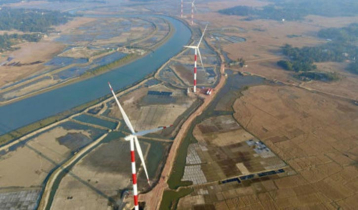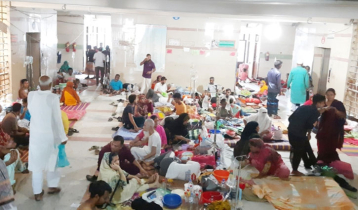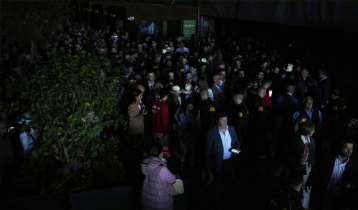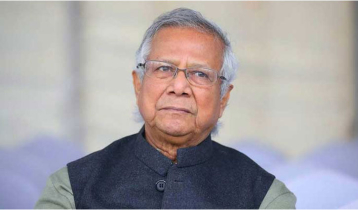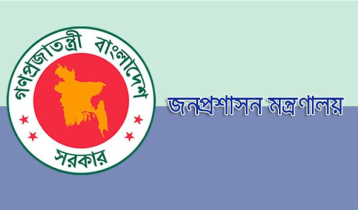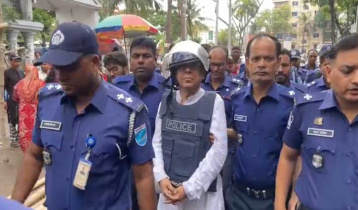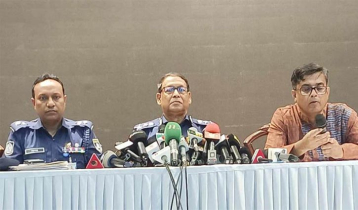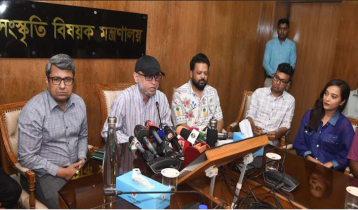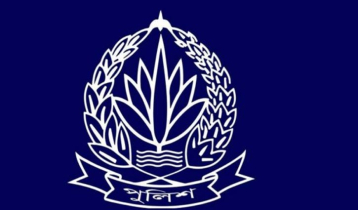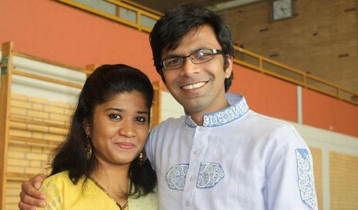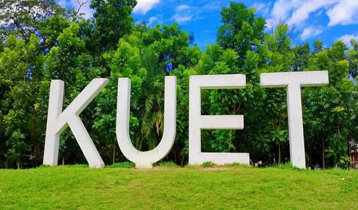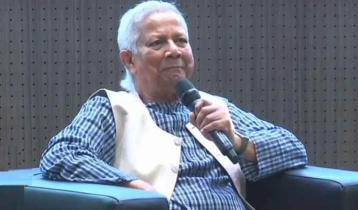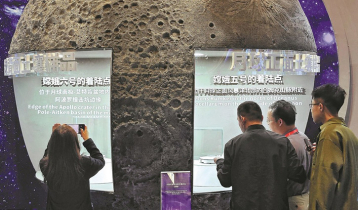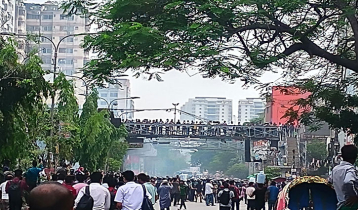Is it possible to revive Buriganga like Thames?
Manzurul Alam Mukul || risingbd.com

The Thames is the beauty of London, a jewel in its crown. London’s financial district, information technology industry and many tourist spots such as the iconic London Eye, Sea Life Aquarium and O2 arena are built on the beautiful banks of the river.
Contrastingly, 60 years ago it was a totally different place. People couldn’t stand next to it as it was stinking and polluted. In 1957, the Natural History Museum declared the river as biologically dead.
But today, it is again a live thriving hub, a sought-after tourist spot and a business centre. Many rivers in our country, especially the Buriganga have turned into drains. The Thames transformation can become an apt case study for rejuvenating them.
The Victorian era was known for England’s Industrial advancement. Many industries and slaughterhouses came on the banks of the Thames. As industries flourished, their waste and untreated pollutants made their way into the river. Believing that the rivers are natural carriers of waste, untreated sewage, waste from slaughterhouses and almost everything dirty ended in the Thames. As a result, the 200-mile river was massively polluted. Due to pollution, cholera broke out in 1832 and it continued for 22 long years claiming 35,000 lives. The ‘Jewel of London’ got branded as ‘The Great Stink’. With no oxygen and continued spilling of untreated pollutants, the Thames started to stink and die. Newspapers called the once beautiful Thames a ‘filthy foul-smelling drain’.
In 1865, a plan was agreed upon for the proposed cleaning up. Engineer Joseph Bazalgette designed the plan to divert sewage downstream, leaving the Thames in central London free from smell. But this did not help as the quality of water started getting affected downstream.
Things started to improve slowly but World War II (1939 – 1945) bombings brought the situation back to square one. Sewage and water treatment plants were destroyed as a result of the bombings. Untreated sewage and industrial waste began flowing directly into the river again and the condition of the river turned from bad to worse.
Owing to pollution, the amount of oxygen in the water fell so low that no life could survive in it and the fish either died or just swam away.
With the Natural History Museum declaring the Thames as biologically dead, British parliament initiated another cleaning up process.
In 1960, a sustainable improved plan was put in place to clean the river. Improved sewage treatment plants were set up and industrial pollutants were removed before releasing the water into the Thames. The government promoted biodegradable detergents to keep chemical detergents away from polluting the water.
Two vessels – Thames Bubbler and Thames Vitality — were used to improve the oxygen levels in the river. The government also tried to breed fish for quick restoration. Gradually, the efforts started showing results. The first natural salmon was spotted in 1970 and since then the life has increased manifold — and quite rapidly – both in the river and around it. Today, the Thames has around 125 species of fish and more than 400 species of invertebrates.
This transformation into one of the cleanest rivers in the world won it the International Thiess River Prize, a £220,000 award in 2010.
Though the Thames came back from the dead and is thriving, the problem is still not fully solved. When it rains heavily, sewage overflows into it and occasionally people still dump their rubbish in it.
Paul Rose, an international explorer began a campaign in 2015 asking Londoners to do the right thing and make sure their rubbish goes to the bin and not into the river. The government too has initiated several measures to further improve the sewage plants to ensure that sewage does not overflow into the Thames during heavy rains. There are plans even to hold swimming events in the Thames.
Recent initiatives to revive Buriganga and other rivers
The life restoration process that put the Thames back on track has many takeaways for Bangladesh rivers, which are on the brink of death.
The government has recently taken 12 master plans to save rivers including Buriganga, considered Dhaka's lifeline, Karnaphuli Turag, Balu and Shitalakkhya.
As part of the initiatives, the Bangladesh Inland Water Transport Authority (BIWTA) under the Ministry of Shipping has been conducting a crash programme from January this year to evict illegally constructed structures including many multi-storey buildings to revive the Buriganga, Karnaphuli and other rivers.
After demolishing over 5000 illegally constructed structures in last six months along both banks of the Buriganga river, the government has recently launched the first phase work of its master plans.
In the first phase, some 3803 RCC (Reinforced Cement Concrete) boundary pillars, one-kilometer fresh-air walkway from Ramchandrapur to Bosila and Rayerbazar canal to Kamrangirchar and 2.5 km walkway will be constructed along the river banks.
Under the project, the BIWTA will construct a 52-km fresh-air walkway, 10,820 boundary pillars, three eco parks, two tourists-friendly parks, 19 RCC jetties, 100 RCC stairs and other necessary infrastructures to protect the rivers surrounding the capital. The estimated cost of the project is Taka 844.55 crore. The project is scheduled to be completed on June 2022. These master plans cover about a 52km stretch from Narayanganj’s Fatullah to Gabtoli.
As planned by the authorities concerned, river-protection green belts will be created on both sides of the river. In future, there will be introduced modern circular bus service on route- franchise basis round the riverbanks.
Eviction by bulldozing always involves pains, but such renovation drives spin off pleasures of better life, too. These initiatives may prove another boon after the Hatirjheel beautification scheme in Dhaka.
Multilevel walkways and driveways, modern-day circular bus service and boat rides have made the once-stinking Hatirjheel into a much-sought recreation spot for people in this overpopulated capital city. It is expected that the new scheme on the Buriganga will transform the river into a project like the Hatirjheel project.
Clean-up creates revival hope
A spot report says sweeping evection drives to save the Buriganga are instantly yielding some fruits. Due to regular drives for last several years, the Buriganga shows signs of resurrection with its water getting clearer.
Relocation of polluting tanneries and some cleanup drives are helping in stopping the rot.
Some days back, people getting nearer the river used to wrap their noses with handkerchiefs or tissue or bare hands to prevent nausea.
But recently, the quality of water in the Buriganga has improved slightly following the relocation of tanneries to Savar from the city's Hazaribagh area and also recent rainfall.
Eminent poet Nirmalendu Goon recently wrote on his Facebook page, "Now the life of the Buriganga, the mother of Dhaka city, will revive. Even a few days ago, the river-water was so stinky that it was impossible for anyone to stand on the banks. But now the water is not so stinky." Goon has built a house in Kamrangirchar on the riverbank and named his lodge 'Buriganga'.
The Buriganga had turned into a flow of liquid waste over the last two decades or so due to discharge of household and industrial wastes. Every day around 60,000kg BOD used to be dumped into it from industrial and domestic sources through 41 drainage outlets, according to sources. But the initiative to relocate the Hazaribagh tanneries, finally, generates a ray of hope. It's being lit up now.
During the visit, it was seen that many big tanneries that used to dump their waste into the river had been shifted from the capital's Hazaribagh locality to Savar on the city suburb.
Steps have also been taken to stop other sources of pollution and tanneries that have not yet been shifted. Water from upstream in the rainy season also helped reduce the stench of the Buriganga. But experts say that a lot more needs to be done.
The latest DoE (Department of Environment) test found the level of average dissolved oxygen (DO) in the Buriganga waters has increased significantly. It also found the level of BOD (biochemical oxygen demand) down to 10.4mg per litre. DO is the level of oxygen required for the survival of aquatic resources, while the level of BOD is the volume of organic waste materials in water. In Bangladesh context, the level of DO should be above five and that of BOD below six in dry season for any aquatic species to survive. The DoE collects water sample from eight points of the Buriganga every month to monitor the water quality. Though its latest test shows a slight improvement, the water is still far worse than the official standards.
For resuscitation of the river, the government in 2011 took up a project to bring freshwater from the Jamuna into the Buriganga. Over Tk 100 crore was spent on the project. A few years ago, the government undertook a Tk 21-crore project to clean up the darkening waters of the Turag and the Buriganga. It was learnt that DoE recently shut down many factories of various types in Keraniganj. These factories too used to dump their toxic waste into the river. But, experts think, a lot more things, including checking other industrial and domestic wastes, need to be done to fully revive the water quality of this important river. Water experts Prof Ainun Nishat and Buet Prof Md Mujibur Rahman and green activists Poribesh Bachao Andolon (Poba) chairman Abu Naser Khan and Bangladesh Paribesh Andolan (Bapa) general secretary MA Matin opine that it is not possible to fully improve the water quality of the Buriganga without preventing pollution by other industries, Dhaka Wasa and two city corporations. They also suggest government should now take strong measures to shift the dyeing factories located at Shyampur on the bank of the river to another place as those have become a major threat to it. The dyeing factories are discharging high levels of concentrated dyes, chemicals and heavy metals direct into the Buriganga through their hidden pipelines.
Prof Ainun Nishat says it appears that the government has made some progress in reducing pollution in the Buriganga as the colour of its water has changed significantly.
He thinks the tannery relocation, rainwater and the flow of freshwater from the Jamuna River into the Buriganga during the rainy season are the major reasons behind the improvement of water in the highly-polluted river.
The water expert said fishermen are getting some fish now in the Buriganga as its water has improved. "But, this is not enough. The government will have to plug the major sources of pollution of the river." Prof Mujibur Rahman also voiced concern that the Dhaleshwari River will be at stake if proper steps are not taken to check the untreated waste of the relocated tanneries in Savar.
Poba chairman Abu Naser Khan said there are two major challenges -stopping both point and nonpoint sources of pollution and encroachment upon the rivers - to bring life back to the Buriganga and other rivers surrounding the capital.
MA Matin said there are many tanneries still in operation illegally in Hazaribagh area. Besides, he said, dyeing factories in the city's Shyampur area have now become main cause of pollution of the Buriganga after the relocation of many tanneries from Hazaribagh.
State Minister for Shipping Khalid Mahmud Chowdhury said "We must remember that Bangladesh will survive if we can save the rivers".
The minister said that the government is determined to restore this one and all the other rivers and canals around and in Dhaka city, by demolishing illegal structures.
"We have planned to transform the Buriganga into a project like the Hatirjheel project by demolishing all illegal structures and evicting all encroachers. The Buriganga will get back its original looks if we can demolish all illegal structures on both the riverbanks," he said.
"We'll construct walkways and make afforestation on both sides of the city's rivers so that encroachers cannot grab the riverbanks over again," he said.
The appalling ground reality is that land grabbers with an influential political lineage target riverbeds to carry on the illegal businesses. This practice is harming not only the Buriganga but all major rivers across the country. We have to make the recent crash programme success and steps should be taken so that encroachers cannot grab the riverbanks over again.
As a second step towards cleaning up the rivers, we need to first stop polluting them. Continuous and pro-active measures should also be taken to prevent plastic and other rubbish from falling into our rivers. Thousands of small to large industries along the river also dump their liquid and solid wastes in the river. At densely populated areas along the river, all human and household wastes find way into the river. At the Sadarghat launch terminal, hundreds of large vessels arrive and depart every day, carrying thousands of passengers. And all the waste produced by them, ranging from mainly polythene wrapping, dirt and food residue generated on the launches, is nonchalantly swept into the river. We have to stop this and for this, both the government and the people have to work together.
Projects cannot resolve this problem, no matter how much money we pour into it. The problems need to be identified, analyzed and addressed. Government bodies, law enforcement agencies and private organizations should work together to train and create awareness among people. It is the reality that healthy and clean rivers and water bodies do not just provide a great aura to cities and towns, but also make our lives beautiful.
risingbd/Dhaka/July 25, 2019/Mukul
risingbd.com




